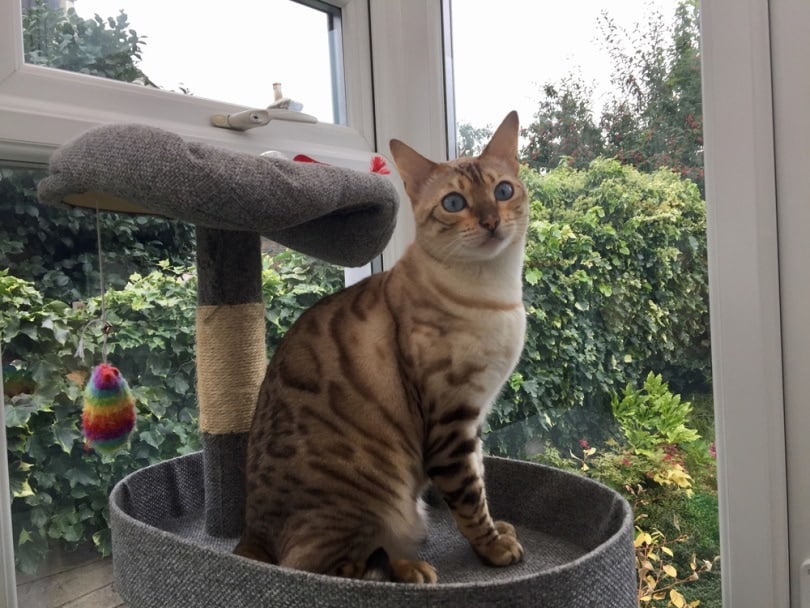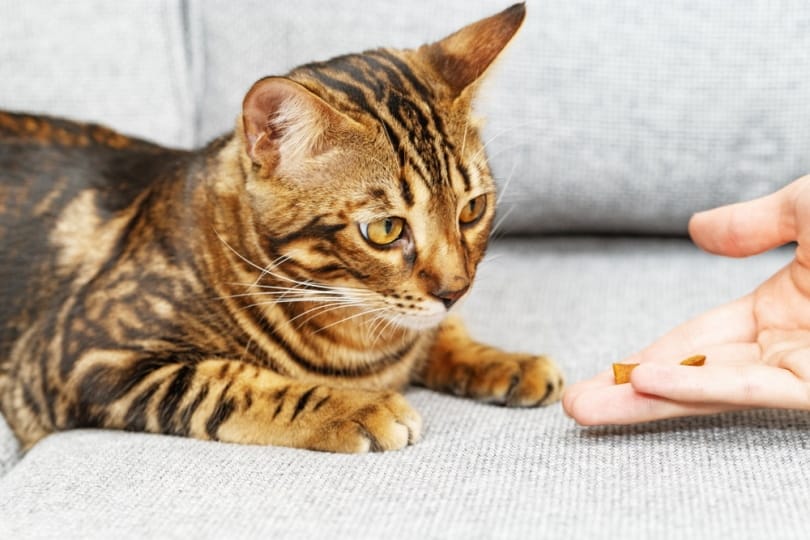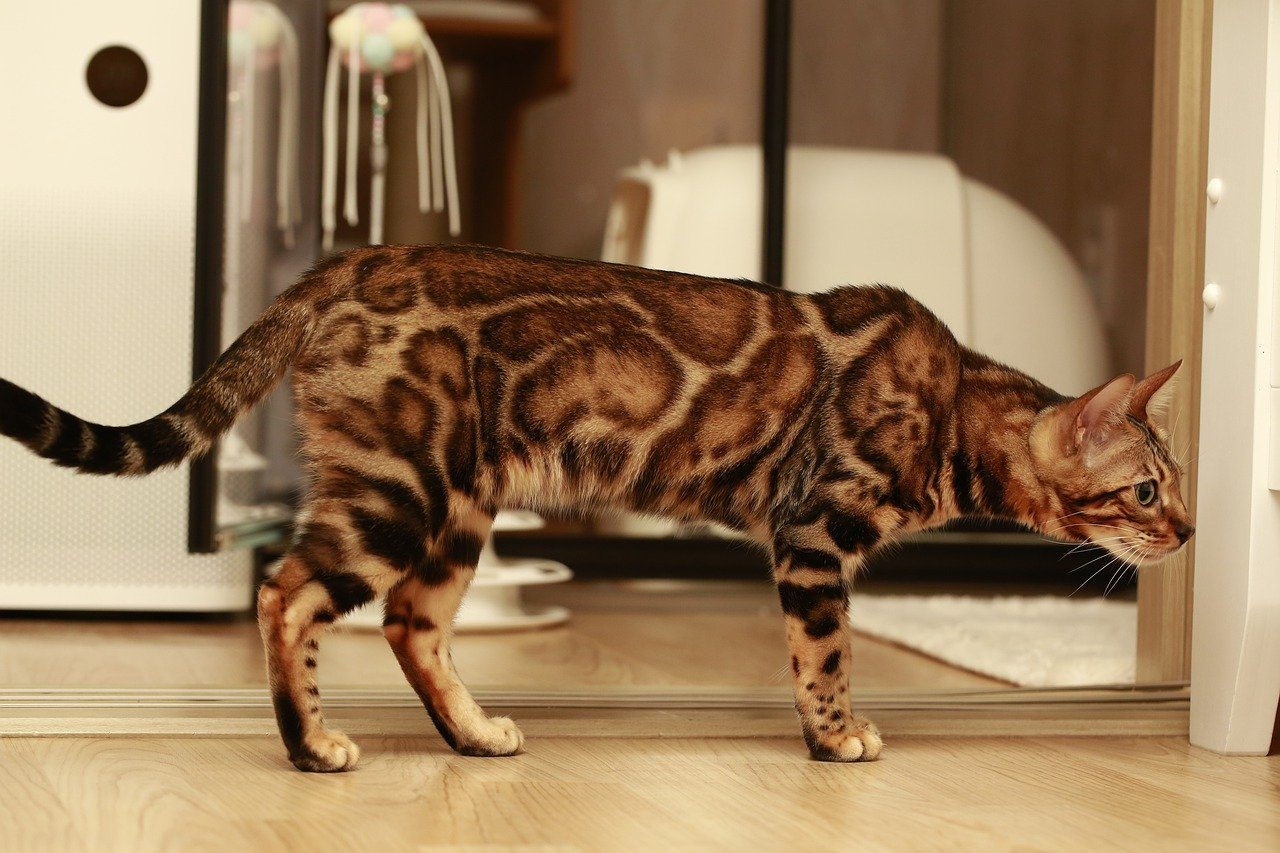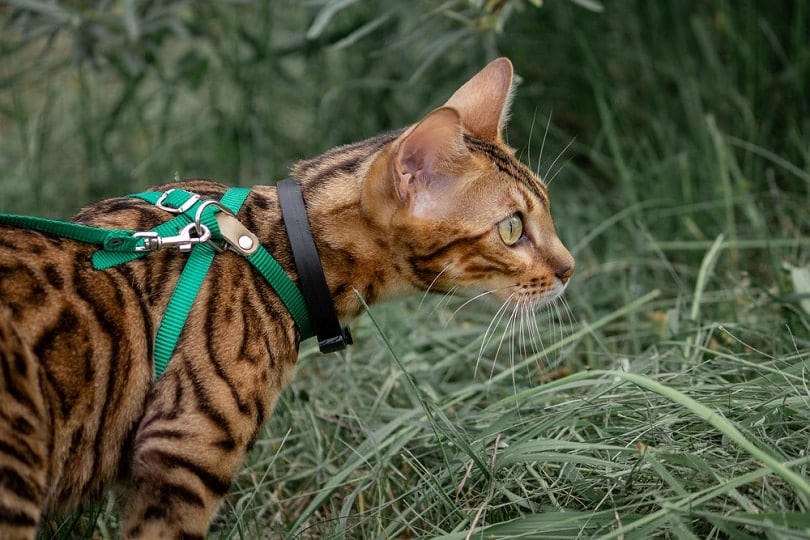If you’ve recently adopted a Bengal cat, you’ve probably learned that the cats have a tendency to get into trouble. They’re curious, persistent, and smart, which can make convincing them to fix the errors of their ways quite a challenge. Because they sometimes fixate on other animals, it’s crucial to train your Bengal to accept its animal friends. Read on for several methods to manage an unruly Bengal cat.
Preparation
It’s critical to have a clear understanding of cat psychology before you begin a behavior modification program. The most important thing to grasp is that punishment and cats simply don’t mix. “Disciplining” your cat is a sure way to sour your relationship with your kitty and get your feline companion to do the exact opposite of what you’re trying to achieve.
Cats bond deeply with their humans, and naughty cat behavior is most often a result of poor human planning or lack of sufficient attention being paid to the cat.
It should go without saying that making a cat feel unhappy because we’ve failed to do our jobs as owners is just not unfair, but it’s also not the way any human would like to be treated.

Why Do Cats Misbehave?
Just because your friend doesn’t mind when their cat jumps on the counter doesn’t mean you have to like or accept it. Biting, attacking other pets or humans, property destruction, and marking are all behaviors that need to be prevented for health and safety reasons.
Cats that jump on counters and refuse to leave tables are simply displaying their natural inclination for high perches and views from above. It provides them with a sense of safety and control. Kitties that bite and destroy your shoes are most often, on the other hand, responding to a lack of mental stimulation or stress. Cats that attack other animals are following instinctual urges to hunt. Getting your feline buddy to correct their behavior requires you to understand and accept the why behind the behavior and address that need.
Steps to Encourage Good Cat Behavior
Bengal cats can be particularly difficult to handle for some owners. Not only are they smart, friendly, and loyal, but they often have a ton of energy which can veer into annoying and aggressive behavior. Read on for tips to help you address “naughty” Bengal cat behavior.
1. Create a Cat-Friendly Environment

This is particularly important for preventing annoying behavior, like jumping on tables and counters and destroying furniture. Most of the time, Bengal cats, like all kitties, get into trouble because they’re scratching a natural itch in a way that their human companion doesn’t like. The trick is to provide your cat with an appropriate alternative. If your feline buddy enjoys jumping on the countertop because it’s a high place where they can survey the world, give them a high perch that’s away from your countertop.
Place treats on the perch, spray it with a cat-friendly scent, and give your cat lots of encouragement and praise when you see them investigating or using the new hangout. Simply move them off the counter without comment when they feel the need to jump up there. Don’t expect immediate results, but the behavior should resolve pretty quickly when you provide them with something that meets their needs better than the countertop!
When it comes to scratching furniture and doors, the answer is to buy a durable scratching post. Consider purchasing vertical and horizontal products so your cat can effectively scratch whenever and however they need to!
2. Make Places Uninteresting

Much like humans, cats avoid places they don’t like. Most kitties hate citrus smells, tin foil, and sticky tape. If you want to prevent your pet from sitting on your couch, try using a citrus cat-deterrent spray to make the area vaguely unpleasant for them. Put sticky tape or tin foil on countertops and shelves you want your cat to avoid and provide comfortable cat-friendly alternatives to the couch and countertop.
3. Ignore Bad Behavior and Reward Good Conduct

Most kitties adore their humans and want to spend time with and please them. Simply refusing to acknowledge it when your cat does something annoying is the first step in behavior modification. Praise your kitty when you see them doing the stuff you want to encourage. Whip out the treats and the “You are such a good cat.”Cats, like humans, respond positively to love.
4. Cat-Proof Your Home

If you don’t want your cat getting into drawers or your dirty laundry, cat proofing is often the simplest and easiest solution. Invest in a few toddler locks for cabinet doors that contain chemicals or other products you don’t want your cat to get into. Use laundry baskets with lids and place a book on top if you really want to keep your cat out of your dirty clothes. Putting your laundry basket in a room that’s inaccessible to your cat also works. Most cats that can open doors can’t undo locks, and it’s wise to ensure your doors lock.
5. Wear Them Out

Bengal cats are energetic and clever, but one of the most effective ways to prevent them from using their smarts to wreak havoc is to tire them out before they have a chance to get into your underwear drawer. Bengal cats are incredibly trainable, so consider teaching your cat to walk on a leash every morning to help them release some of the excess energy that often gets them into trouble.
6. Acknowledge When You Need Help

Even fully “domesticated” Bengal cats can exhibit problems with aggression towards other pets, and some tend to urinate outside of the litter box. Start with the basics, like keeping pets apart at first and allowing them to become accustomed to each other’s scent before permitting direct interaction to reduce the chance of inter-pet aggression. And when it comes to using the litter box, make sure you’re cleaning it more often than you think is required; cats have sensitive noses and don’t like to put their paws in smelly litter boxes.
If you’ve taken care of all the basics and your Bengal cat is still not cooperating, it’s time to see your vet. The doctor will ensure that the cat is not suffering from medical issues before addressing their behavior. If everything is fine, ask for the name of an experienced animal trainer or veterinary behaviorist.
Conclusion
Getting your Bengal cat to behave is more about creating an environment that gently guides them towards activities that keep you both happy, healthy, and content. Be kind, ignore the annoying stuff, and provide your four-footed companion with the stimulation and environment they need. With a bit of patience and lots of love, you can keep your Bengal from misbehaving.
Featured Image Credit: Seregraff, Shutterstock












